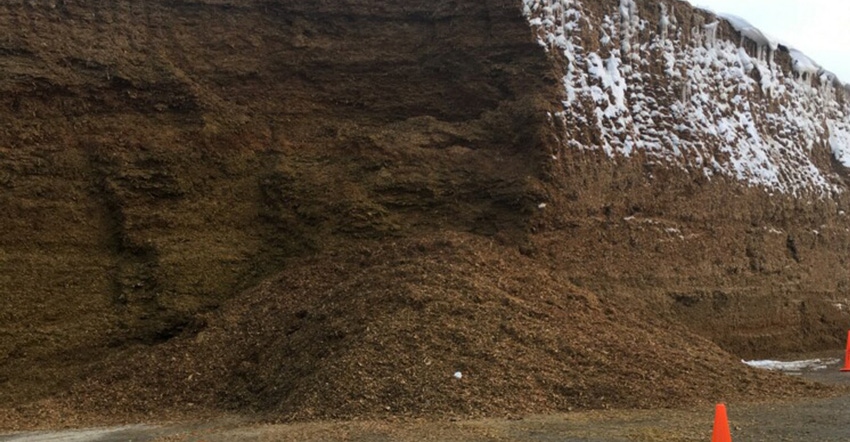January 24, 2019

By Stan Maddux
A Purdue University farm safety expert says nobody should be on foot at the face of an outdoor silage pile. Bill Field, Purdue Extension farm safety specialist, says the face of a pile of silage being scooped out is weakened by disruption of the material. He says John Cummings, 35, might be alive today had he kept his distance and had a piece of heavy machinery bring him samples from the pile for testing.
Cummings was at the base of a 30- to 50-foot-high outdoor silage pile when a portion collapsed on him at Red Arrow dairy farm in southwest Michigan, according to the Van Buren County, Mich., Sheriff’s Office. The farm is near Hartford, about 40 miles north of the Indiana border.
Rare but deadly
Field says accidents of that nature are rare. But much like deep snow in the mountains, a large section of silage can break away and come down without apparent cause or warning. Anyone on foot covered by the extremely heavy material can be crushed or suffocated from not being able to dig themselves out. Field says a heavy-equipment operator taking too much material from the side of a pile can lead to a collapse.
“Sometimes these piles get to be 30 to 40 feet tall, which means as you cut into the face of them, it leaves basically a cliff of freestanding silage,” Field says.
Bug infestation weakening a pile from the inside can also lead to a silage avalanche.
According to police, Cummings was by himself after a farmworker left to take silage to the cows. The Michigan branch of the Occupational Safety and Health Administration was investigating.
Cummings was subcontracted through Ag Business Solutions of Grand Rapids, Mich., to take samples of silage at the dairy for testing to make sure the feed was up to nutritional standards, police report. In a statement released by Ag Business Solutions, Cummings was described as a “very capable veterinarian.”
Multiple risks
Field says other risks of outdoor silage storage include falls when silage beneath a person’s feet gives way because the person got too close to the edge. On the other hand, Field says, indoor storage can also produce cave-ins, along with entanglement in machinery and falls during climbs up a 70-foot or taller silo.
“[Bunker silos are] just a cheaper approach and probably have saved a bunch of lives,’’ Field says. He adds that nobody should be allowed at the base of an outdoor pile unless the person is in a payloader or other machine with a roof as protection against a collapse. He also suggests using a cutting tool that peels back silage, leaving the face of a pile smooth and less likely to collapse.
Traditional silos have other risks, too, Field says. Material can stick to inside walls from freezing or spoiling. Walls should be cleaned as high as possible to reduce odds of material left on the walls breaking free and burying someone.
“This stuff just comes down and buries them,” Field concludes.
Maddux writes from South Bend, Ind.
You May Also Like




